

|
Home Updates Hydros Cars Engines Contacts Links ← 2014 2016→ Race Reports Contact On The Wire |
|
|
Oliver Monk 'Workshop Ramblings' 2015 |
The New Year is now two months old. After a spell out of the workshop down with flu and then problems with one of my teeth, I am now back in there again. Much of what I will write in the future will be a variation on what I have done in the past so I will pick the interesting bits out. Its boring to write the same stuff as I am sure it is to read it. So here goes.
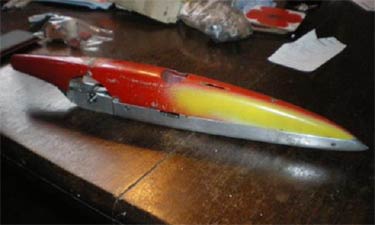 |
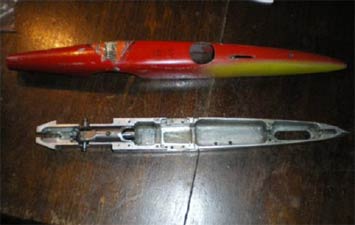 |
Ake Ekstrand very kindly sent Aaron this 1.5cc car project. It is whatís left of one of Akeís cars that he sold and later got back. It dates from the 1980ís and has, in its day, run in the 240ís.
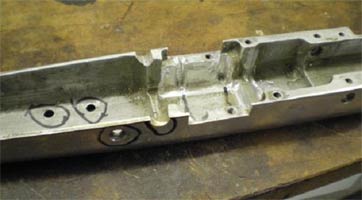 |
 |
We had decided that as part of the rebuild it would be made to run the conventional way round. The chassis had quite a few surplus holes, so these were prepared for welding. The welding is done by Nigel, who is local and a specialist tig welder. When I dropped the car in he had just received an old F1 gearbox from America for repair that had gone bang whilst racing in a classic F1 series. Heís a very handy guy to know, nothing we have given him yet has proved to be a problem and heís quick, usually next day.
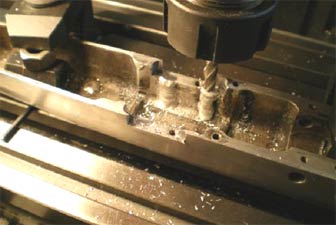 |
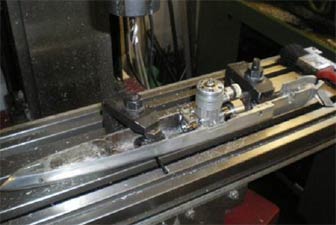 |
I had four of the six engine mount holes filled. Two looked like they were in the right place, when the engine was in another one had to be filled as it was a Ĺ mm out.
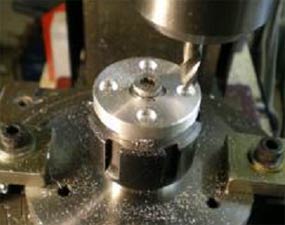 |
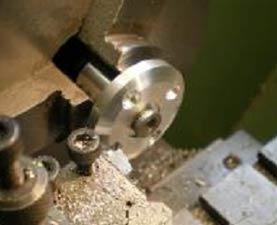 |
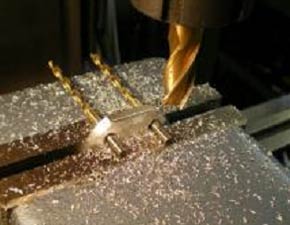 |
At the last race in Tallinn I collected a 3.5cc turned round Novarossi from Edvard Stelling. I prefer to use brass insert heads as they are less likely to strip the glow plug thread when tightening the plug up. The pictures show the final machining processes of the clamp ring used to hold the insert in. The head has flats either side as itís a tight fit in the car.
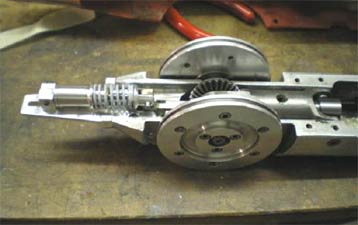 |
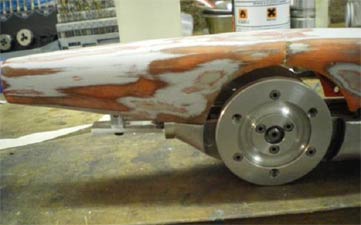 |
Quite a lot of progress on the back of the car. Hubs made for the wheels and the nuts had to be made so they would fit into wheel centres. Homemade shock absorber, space is a bit tight at the back under the pipe. The top is going to need a bit of modification to enclose the suspension/pipe bracket, and to conform to the current reg's itís going to need a built in skid at the back. Itís a bit cold for grp work, not allowed to cure resin in the house!
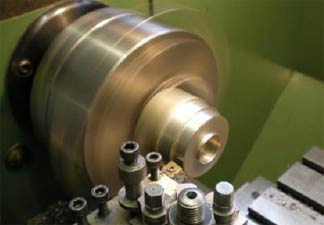 |
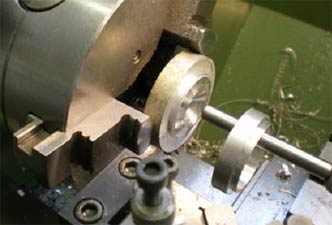 |
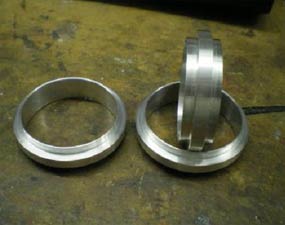 |
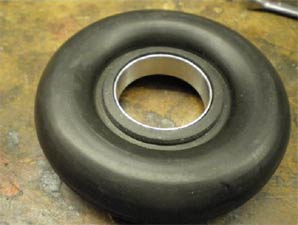 |
Just for change, you can only work on small cars for so long. I have two Dooling Arrow replicas that I built but I never got round to making the inserts that go in the tyres for the second one. Itís a fairly straightforward turning job. Why the insert? The cars have balloon tyres, no air in them, but as the speed increases the diameter grows, the insert supports the bead in the tyre centre allowing the tyres to be clamped securely into the hubs.
|
This is just a dust collector now but at least it can be run again, I keep threatening to put a Rossi 60 in it to be more in keeping with the era of the car, but the engine needs quite a bit of work before it can be used. In its current state it must meet the requirements of one of the AMRCA classes? I would like to race out in America but not this year. |
|
Aaron has been busy on his lathe, made a new tyre cutter for the 1.5cc car. This one uses Kapu type tyres, getting quite good on it and he is building a Russian school car at the moment.
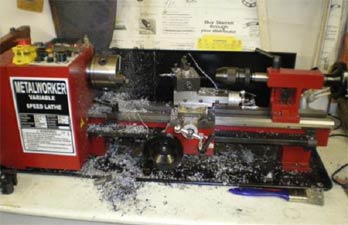 |
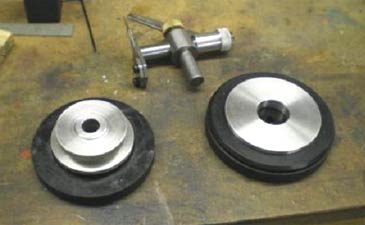 |
Well thatís it for this month, still lots to do in the workshop before the start of the season. We are going to Kapfenhardt, Hannover and Pila to start with. All flights and hotels booked, just need to decide where to go in the second half of the season.
The new front wheels arrived for the car. Not quite what I was expecting as they need to have a ball race fitted.
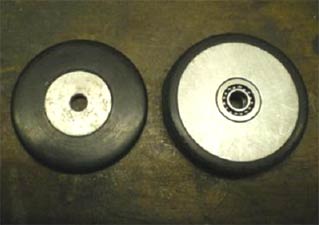 |
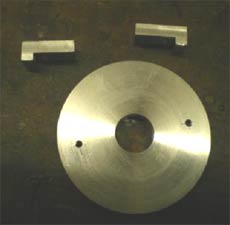 |
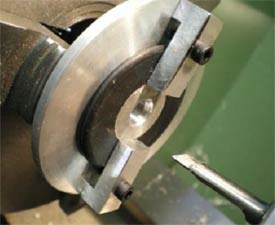 |
|
New wheel left |
I made the fixture
above to hold |
The wheel being held
in the fixture |
 |
 |
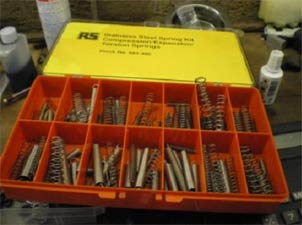 |
|
The wheels have been bolted together and fitted into the car along with a wooden mock-up of the tank to make sure everything will fit |
The front suspension in, using the shut off as the rear mount for the shock absorber |
Box of springs so I could select ones that felt right, not room to fit adjustable shocks |
The body had broken its back at the top of the wheel arch. This has been repaired with carbon fibre tows and glass cloth. The back had to be modified to get the rear suspension in.
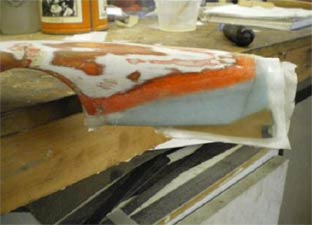 |
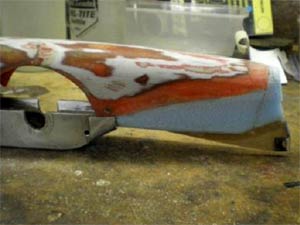 |
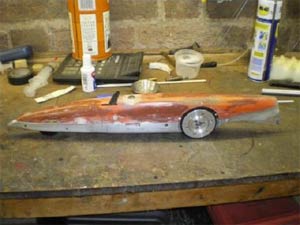 |
|
The new shape was done with blue foam and then glass cloth laid over it. |
The back of the car
finished with the bulk of the blue foam cut out |
|
The gearbox wheel hubs need keyways cutting in. I made the cutting tool from gauge plate, hardened and tempered it prior to use. The keyway is cut by winding the lathe saddle backwards and forwards and taking small cuts of 0.05mm. I machined up a bit of the gauge plate to make the keys.
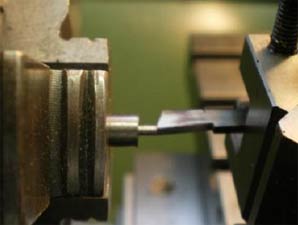 |
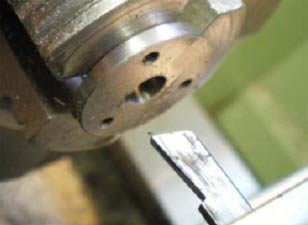 |
 |
|
Tool being set on centre using a spigot the same size as the tool |
Cutting the keyway |
Finished hubs |
I have been making stingers for my 2.5cc pipes, and a little tool to tighten them up on the pipe. PTFE tape helps stop them coming unscrewed and also stops them seizing up. Works well on aluminium pipes too.
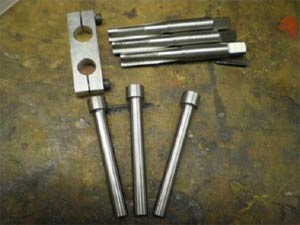 |
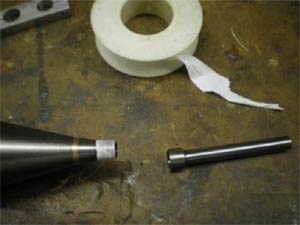 |
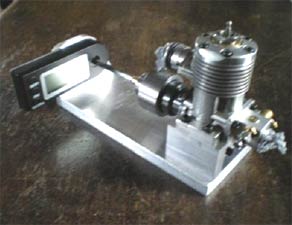 |
| Stinger, taps and tightening tool | PTFE tape on stinger thread | 1.5cc motor on digital timing device |
|
Aaron has been busy in the workshop making himself a small timing measuring device for his 1.5cc engines. (above right) I have done a logo for the BTCA and had a trial run of "T" shirts printed for us to wear when we are competing abroad. (right) |
|
The 1.5cc car all finished and ready to race. Thatís all our cars ready for the new season Aaron will be running his two 1.5cc cars and I will race my 2.5cc and 3.5cc cars. We are both looking forward to this season, just hope itís as successful as last year.
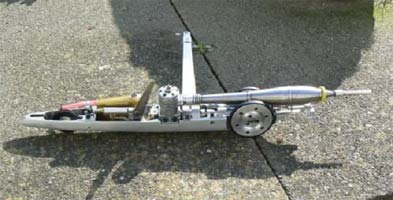 |
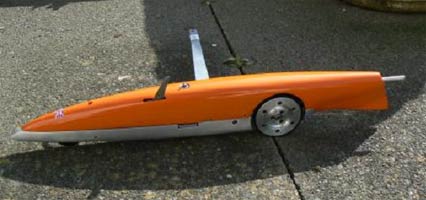 |
Another amazing
transformation by Oliver as can be seen by comparing with the photos at the
very top of the page showing the condition the car was at the start of the
year. Had a bit of a break from the workshop, a holiday with a
bit of racing in Australia and then the start of the European season plus we
have had some lovely weather. I am finding retirement a busy life, I donít
know how I managed to fit work in. I have been doing some work on the Gado engine and needed
some paper gaskets so I could get the clearance corrected on backplate
assembly. Itís a straight forward process, fold up the paper so you produce
more than one at a time. The plastic hole cutting compass is a must and only
a few pounds. Put the paper with the cut holes onto the back plate and fit
to the engine, make the first hole, donít damage the thread in the engine,
put a bolt in, do the rest of the holes and trim round with a sharp knife. Gabor gave me a few tips on getting the Gado engine to go
well, one was to lighten the flywheel. I borrowed a rotary table from a good
friend down the road, my table is a light weight one my father built for
engraving clock dials. It proved to be a simple milling operation once I had
worked out the slot positions, see centre picture. This proved to be an
expensive job as I found the 8" diameter rotary table very useful. I bought
one of my own, it's British, not seen much use, just needed some handles
making. Got it off eBay, half the price of an oriental one. In the latest copy of the Retro Racing Club
newsletter was a list of items for sale, one of them being a
Howlett casting for an Alfa Romeo 158 car, these were later sold
by Oliver of Tiger fame. The initial plan was to put a Picco 2.5cc
motor in it so it would be quick, but was persuaded against it
as the casting is a bit of history. So itís having a CS Tiger
with a spur drive, similar to the original.
I cut a slice off the block of aluminium and produced
lots of swarf, milled out the engine mount with a ball nose cutter, quick
check that the engine fitted. In the last picture I reamed a hole where the
axle would go. I had calculated the position for this hole so that the gears
would mesh with the engine. The first picture shows the block set up in the lathe
held on an expanding mandrel ready for boring the bearing housings and
circlip groove. I did one side, turned it round and did the other, the
mandrel ensures that they are inline. Second picture is more metal removal
and the last, tapping the holes for the engine hold down bolts. The picture
does not show it very well but tap wrench is small, helps reduce the chance
of breaking a tap. I bought the gears from HPC, they are heavy duty and made
from EN24T steel which is tough, a lot of material had to be removed to make
them model car sized. First picture shows the taper being machined into the
bore of the gear for the collet to fit it to the engine crankshaft. Getting somewhere, ready to fit into the car. You will
see a spacer under the engine lugs, this was to get the gears to mesh. I
checked my sums, measured the work I had done, everything seemed right. On
the CS Tiger the crankshaft centre line is not at the bottom of the mounting
lugs, never seen this before! Next job is to get it into the car, itís going to be
tight fit, I have already relieved one of the corners.
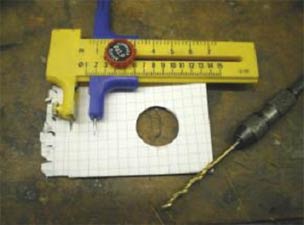

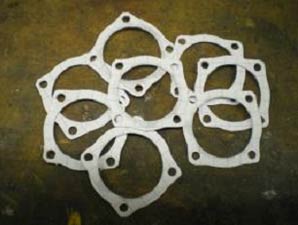
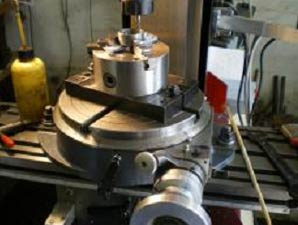

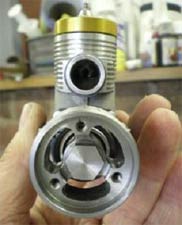
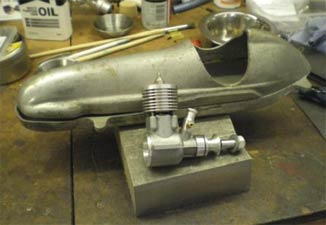


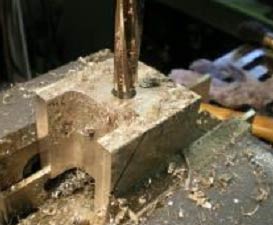
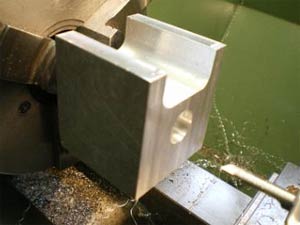
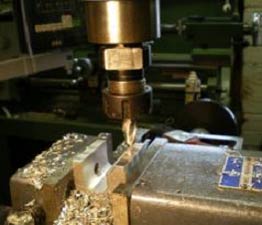
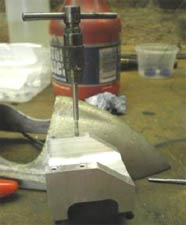
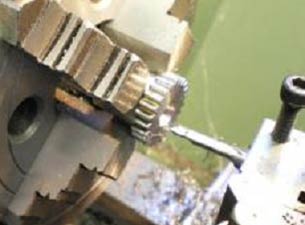
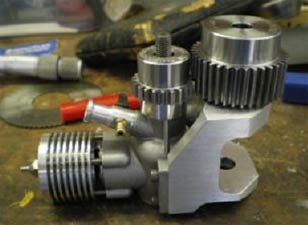

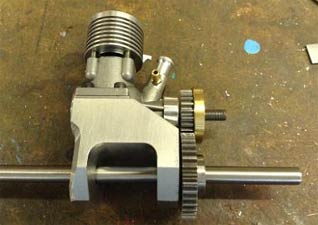
I am writing this just before we go to Pila for a grand slam race. The entry is huge, 103 cars and 64 drivers, it should be a great weekends racing, sunny and 30 degrees. With this amount of competitors we are not going to get a lot of testing done.
My Gado 2.5cc engine is extremely sensitive to the needle, a fraction of a turn is the difference between a rich or lean setting. I have made three different needles to try.
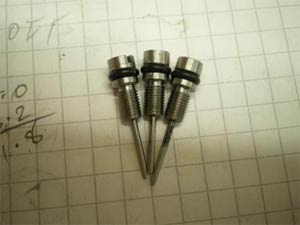 |
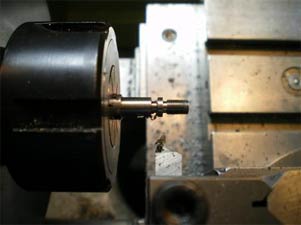 |
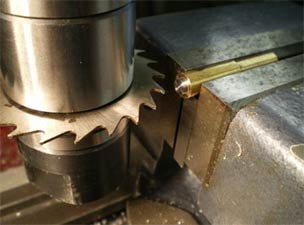 |
I machined up the bodies for the needles, made a little fixture so I could slot the heads. The actual needles were made from piano wire, and stuck in place with Loctite. One has a very fine taper and the other two are quite different, a Jan Eric Falk design. Preliminary testing was done on Hughís air pump which measures the flow through the needle assembly. The fine taper one gave the least sensitive result. Will let you know how they performed in the race next ramblings. The "O" rings came from an ebay supplier.
Back on with the Alfa.
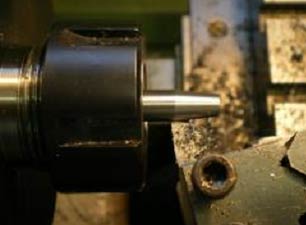 |
 |
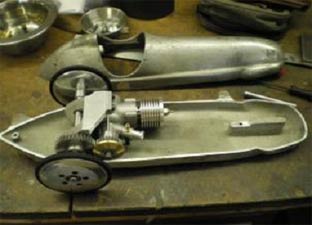 |
The first picture is machining the taper on rear axle for the wheel, the second is cutting tyres for the wheels. The wheels, tyres and a tyre cutter base a gift from Philipp Meier for an old-timer car that I might build.
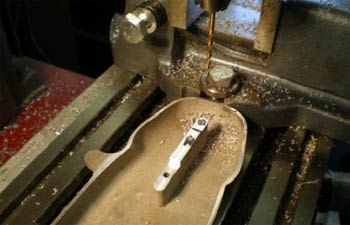 |
 |
The front wheels are a simple rigid mount, two holes are drilled and tapped in the chassis and a second piece to form the other half of the clamp. In the second picture there is a square on the back wheels to ensure when the front axle hole is drilled both axles are in line, the bit of white paper is in between the clamp and the chassis and when removed after drilling will ensure the axle is held tight.
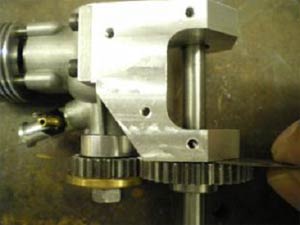 |
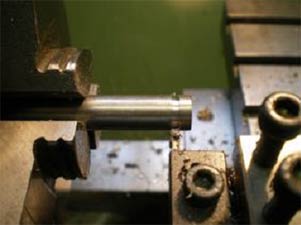 |
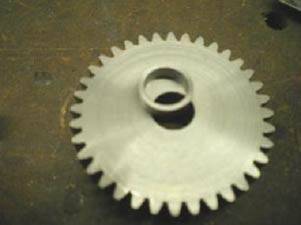 |
The back axle needs setting up so it does not move about. In the first picture I am measuring how much clearance I need between the gear and engine mount. A spacer is machined up to fit between the ball race and the gear, thatís one side done.
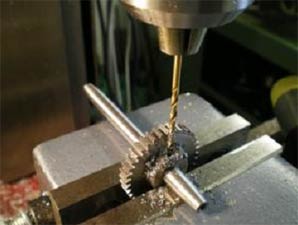 |
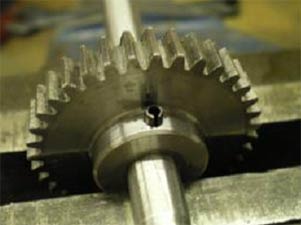 |
 |
In my other cars I have always used taper pins to hold the gears in place but they are not easy to get these days, so I have used a roll pin. I donít think the engine is powerful enough to break it. The last picture shows the spacer to hold the other side of the axle in place.
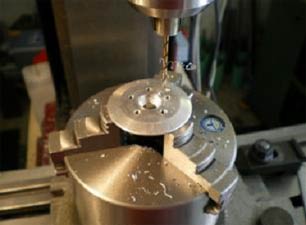 |
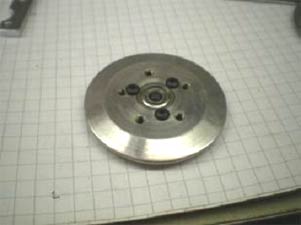 |
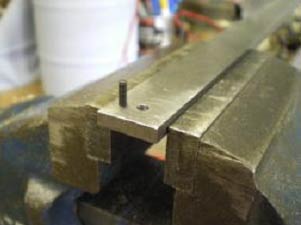 |
The front wheels were a gift from Hugh, just needed to machine a housing to fit the bearing and drill and tap three holes in each wheel for button head screws to hold the bearings in. The screws are M2.5 and needed to be cut down. A plate with a tapped hole in it makes the job easy.
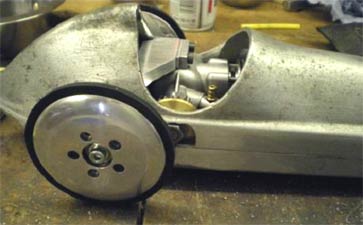 |
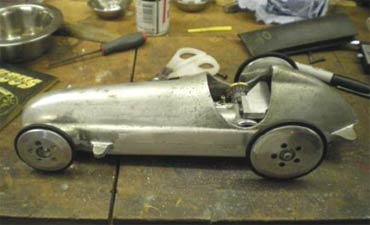 |
The top is on but it needed a lot of messing to do it, the engine has had the cooling fins machined off one side, probably need to do the other side to keep the cooling right. Lots of grinding inside the top, thin in places now. The top needs a visit to Nigel the welder to fill the gap by the flywheel nut, got a couple of other welding jobs that need doing at the end of the season so it will go then.
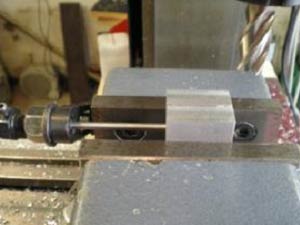 |
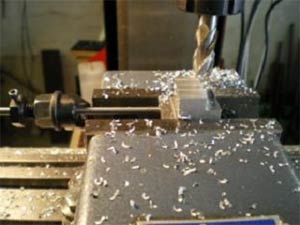 |
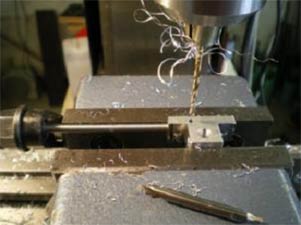 |
These are the milling and drilling operations for the shut offs in the Alfa car, and one for an Australian hotrod car. The only important hole is reamed, this is where the fuel flows through, donít want it drawing air in, just gives problems with needle settings.
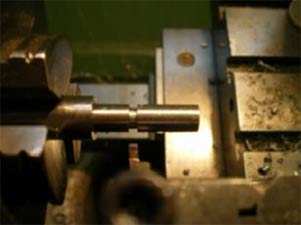 |
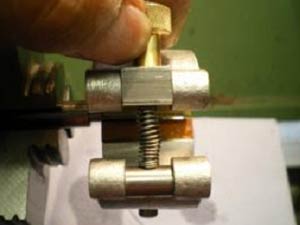 |
 |
Machining up the valve for the shut off. The groove is where the fuel flows through. To get a good fit in the reamed hole I hone it down to final size. The third picture is one of the last operations in making the fuel nipples.
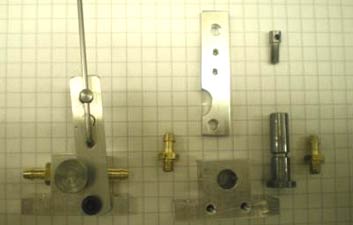 |
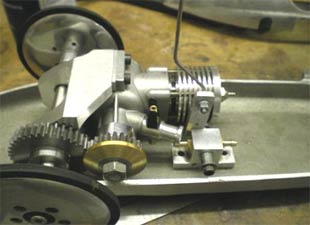 |
|
The finished shut offs and a trial fit in the Alfa. |
|
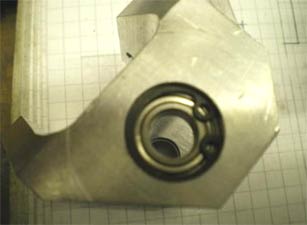 |
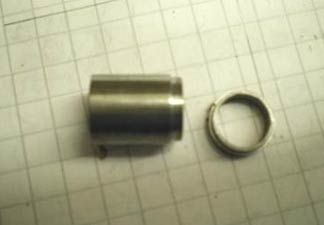 |
| The bearings for the rear axle are held in place with circlips. They did not leave much room for the spacers on the rear axle, had to machine the ends down a bit. | |
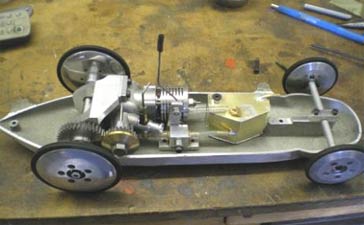 |
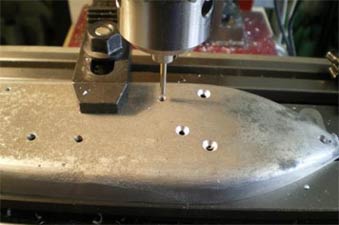 |
The Alfa getting closer to
completion, all the main parts are in now. I have always struggled to
get good countersunk holes but I seemed to have cracked it. Now bolt the
work down and run the countersink at very slow speeds.
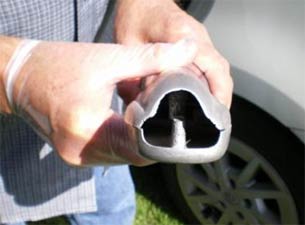 |
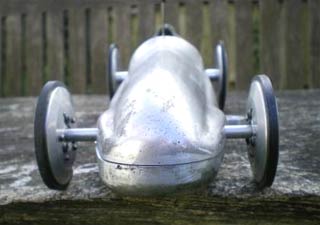 |
The picture on the left is a casting off a casting of an Oliver Alfa. To me the hole in the front looks huge, got to do some research on what the original full size cars looked like before I cut the hole in mine.
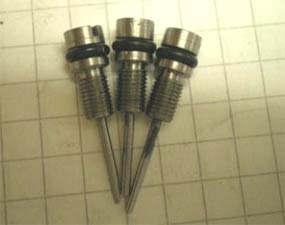 |
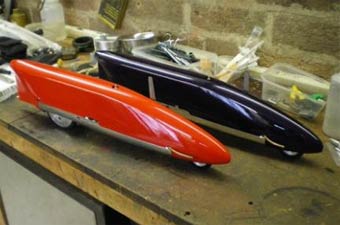 |
I tried my new needles in Pila with no success at all. Gabor, amongst others, had told me that the vent on my tank which sits in the air stream was too big, it works on my other cars so I did not listen. For the race in Basel I made a restrictor for the vent, the car went round and round but rich. The new needles are much less sensitive now as well. The car was starting to show signs of promise by the end of the race. The changeable weather did not help with the setting up though.
|
Basel was not a total success, during training my 3.5cc car didnít sound right so I stopped it. A piece of the zimmerman disk had broken off, the damage was quite extensive, everything in the picture is scrap plus the bearings. From what I can see the reason for failure was the sharp corners in the drive slot you cant see it in the picture but there is another crack growing from another corner. To make it worse I had left my spare engine at home. The spare discs have arrived these are blanks just the hole in the middle but with radiused ends and a little thicker, the downside is the diameter is a bit big and needs turning down. More on that next month.
|
|
|
|
I collected this car in Pila from Linas Adomavičius, sold as a universal pan and a top for 3.5cc and 5cc cars. I intend to build this as a 2.5cc car, the plan for next season is to run two 2.5cc cars and see if I can break the current British record. Not sure if this is such a good plan now FEMA have circulated the minutes from the last meeting in Russia, as competitors have been asked to consider the amalgamation of the 1.5cc and 2.5cc classes with a new engine size of 2.1cc. due to lack of 1.5cc and 2.5cc engines. |
I am not aware of any 2.1cc engines that are available for tether car use, lots of RC car engines but they need significant modification which is not cheap, and you need to find someone capable of doing it to be of use in a tether car.
Working on the top and bottom I bought from Linas (see photo above) and itís going to be one of my winter projects.
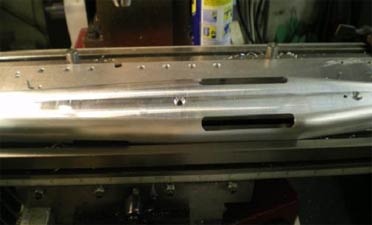 |
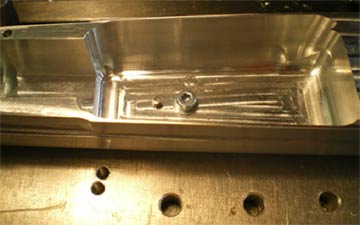 |
|
I always bolt
the pan to a metal base plate. |
|
I have locating pins that fit in the "T" slots of the milling machine table, the base plate is located against them. With this arrangement I can take it off and put it back on plus move it up and down the table without having to re-zero it each time. The base plate was drilled for the locating pins and hold down screws, see the second picture above.
 |
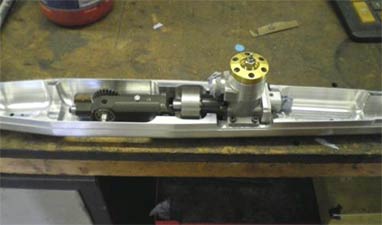 |
The pan is sold as universal. I just need to remove a small amount of metal to get the engine to fit. The parts are not supplied with drawings and I am no draughtsman, so I measure and draw up as I go but I tend to use centre positions etc. to make sure it all fits before I cut metal. In the second picture I am positioning the engine and gearbox so that the wheels are in the centre of the cut outs in the pan.
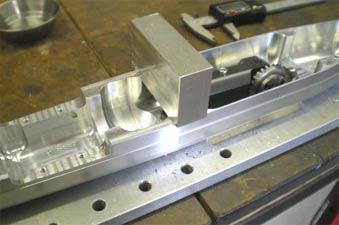 |
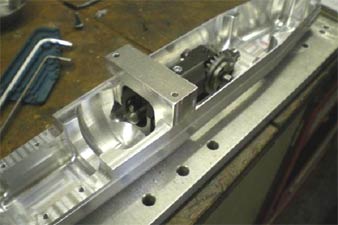 |
|
Next is the gearbox mount that will
also be one of the brackets for holding the top on. |
|
 |
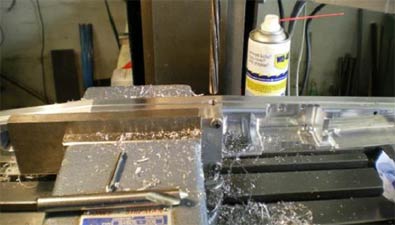 |
|
Drilling and reaming the gearbox
pivot holes. I always seem to have a WD40 can in the |
|
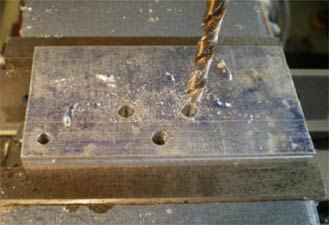 |
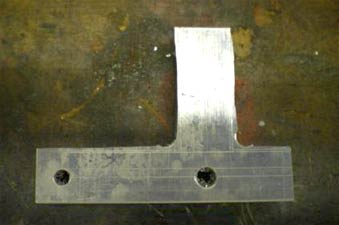 |
|
This is the
start of the front suspension and on the right it has been cut
to shape |
|
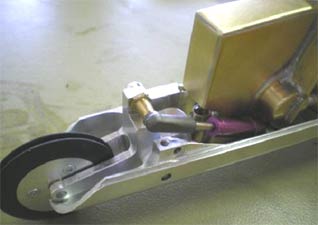 |
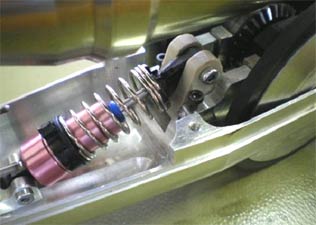 |
These pictures are of Edvard Stellingís 3.5cc car which has been built using the same pan and top, it certainly helps when you are building the car to see how someone else has done it. I liked the front suspension but there is not room to have a spring on the damper as space is tight so itís fitted in the suspension arm behind the pivot.
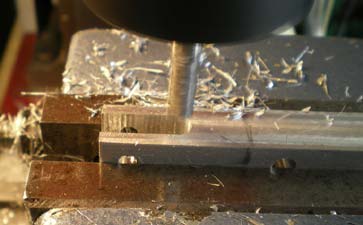 |
 |
First picture shows the slot for the wheel being plunge milled prior to finish milling and the part finished suspension in the car. I am not so sure about the rear suspension, the car seems quite long for a 2.5cc car as I write this I am thinking about other ways of doing it.
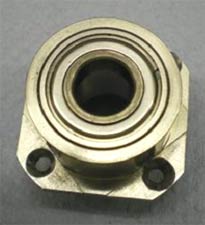 |
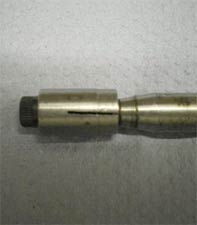 |
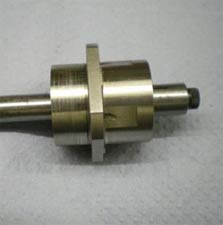 |
 |
Getting bearings out of front housing where you cannot get a drift in from behind. I made this little gadget, itís an expanding collet that grips the inside of the bearing. The device is fitted and tightened up and the bearing pressed out.
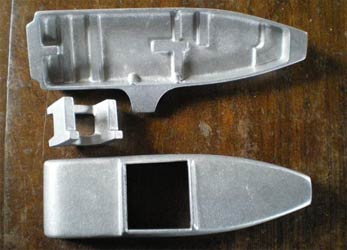
These castings have arrived from Australia for a
3.5cc hot rod car, another one of my winter projects. This is the shut off for the 2.5cc itís based on the one
in my 3.5cc car itís a fairly straight forward milling job, but the "latch"
part is quite novel being half a hole but has worked very well. The arm is
made from an old steel rule good springy steel but not too hard to work only
got 10 inches of the 2 foot rule left. This is the rear suspension again copied from my
2.5/3.5cc Sepp cars made from steel rule but not a springy material as it
had to be bent, I have milled a recess in the edge of the pan for the front
suspension bracket. This a quick and simple to make suspension system as it
does not have to turn the suspension movement through 90 degrees using a
ball and socket bell crank system with the spring/damper hanging out at the
back. The pan is made for 2.5cc to 3.5cc cars and for me it was
too long and I did not need the space for the rear suspension, so I chopped
the back section off and had a plate TIG welded in to form the back of the
pan. After marking out the cut lines on the top I cut off the
bottom using my Aldi "Dremel" with a cutting disk in it. Sanded the cut
lines on the flat band saw table using the pan as a checking fixture. I shortened the top by about 40mm this was cut off the
backend, to get the shape right at the back I cut a "V" shape out of the top
warmed the body up and bent it to shape. GRP is quite easy to move about when
its hot and it stays in place when cold. The bottom piece also needed some
changes but this was cutting and gluing. The top and bottom where assembled and held in place with
masking tape I then laid up some resin impregnated glass cloth over the
joints the orange pvc tape covered wedge " so its doesnít stick" was to
apply the pressure on the glassed up joints. The right hand picture shows it
all stuck together. With the top on its way to being finished I could get the
tank built and see how much room I had for the front suspension damper and how I
was going to fit it. We have decided to go to the Lucia race at Kapfenhardt,
and I needed a car to run so work has ceased on the 2.5cc car so I can
rebuild the 3.5cc engine. I have got some new Zimmerman discs but the
diameter is too big so they needed reducing, they are not the easiest thing
to hold. I machined a reccess in some aluminium bar so the discs were a good
fit made a washer the same size as the disc and held it all together with a
2.5mm caphead in the centre. Then machined to size see third picture. The picture shows the original diameter of the disc and
the new smaller one, the zimmerman housing needed skimming out to remove
damage from the disintegrating disc and make room for the thicker disc. The
third picture shows the new disc from my spare engine. This has a boss in
the centre which is an improvement over the old disc. This the tool I use for pushing the bearing into place
using the lathe as the press, the outside diameter of the tool is just
smaller that the outside diameter of the bearing and the pin is a good fit
in the bearing inside diameter. Just setting up the exhaust timing on the engine, timing
device makes a nice stand to work on when building the engine up. Machined
up a new head, the shims are already in place to set the squish band
clearance. Well thatís it for this month. The 2.5cc car is coming on
nicely. Still one race to go this year, next season will be here before we
realise it. Still got lots to do. I have been voted in as FEMA Technical Secretary. One of
the projects I want to do this winter is to get the English version of the
rules finished and in use, so I am looking for volunteers to proof read the
rules as I bring them in line with the German version.
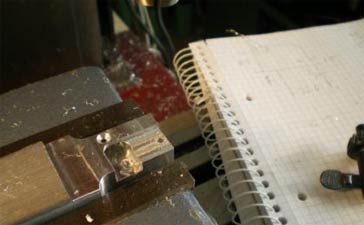
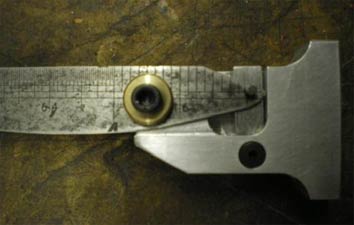
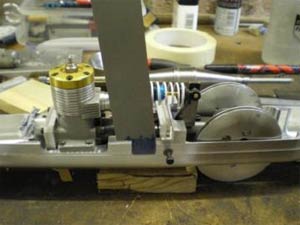
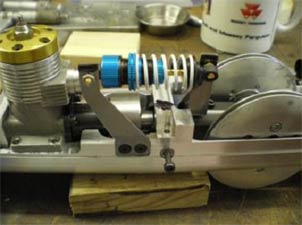
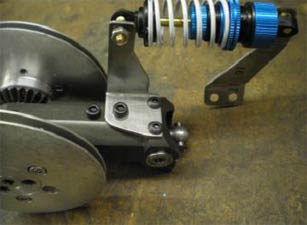
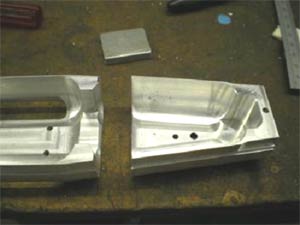
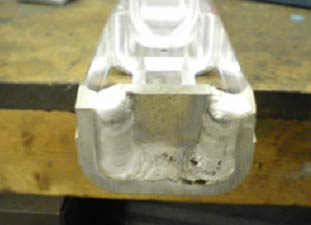
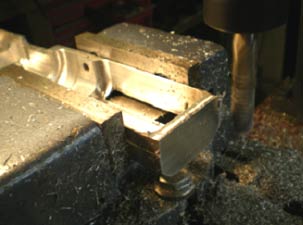
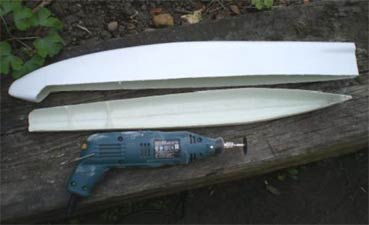
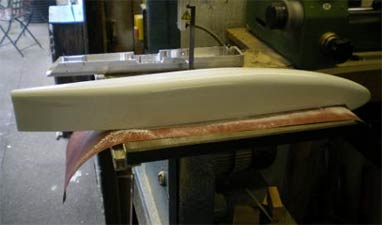
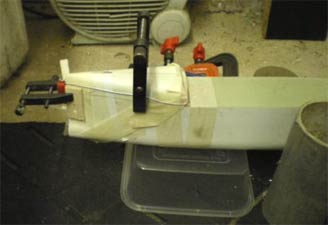


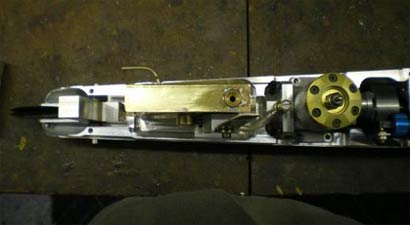
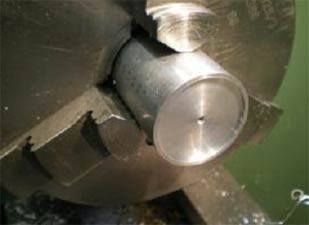
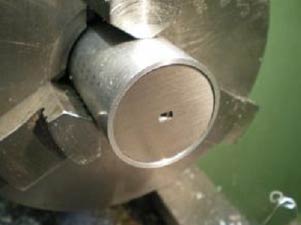

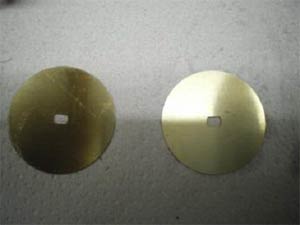
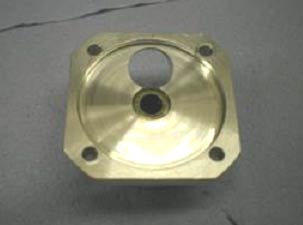

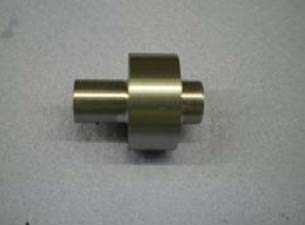
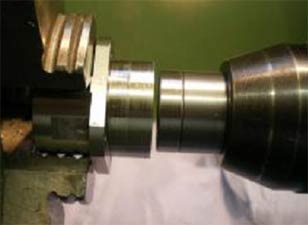

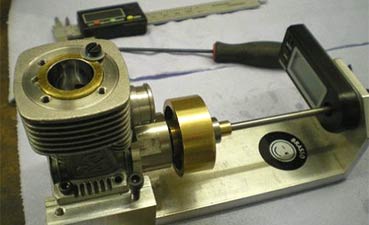
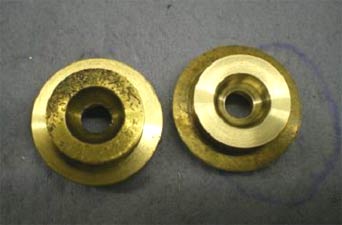
©copyrightOliverMonk2015